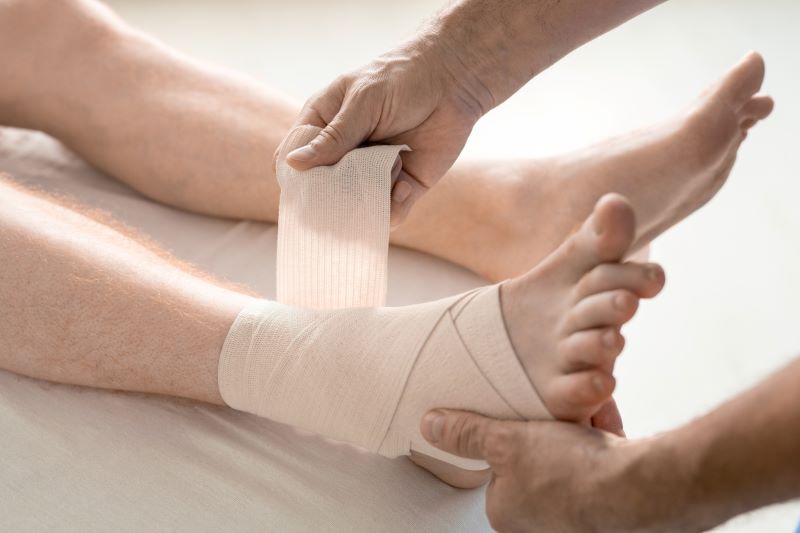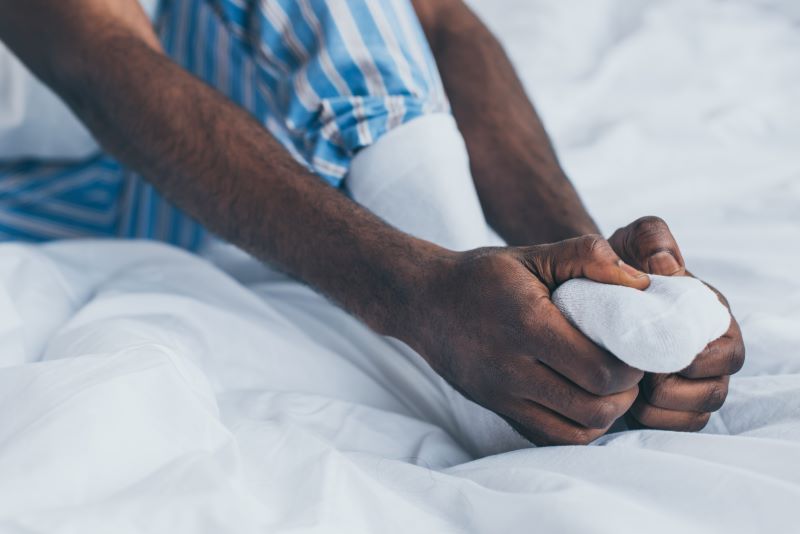Skin grafts are commonly used to repair wounds that don’t heal well and help restore burn areas, but what is a skin graft? Your doctor will select a healthy piece of skin from another part of your body as the donor site for transplantation, matching its tone, texture, and thickness with that of your graft site.
In answer to “What is a skin graft?”, skin grafts are surgical procedures that restore damaged or missing skin tissue. They treat burns, wounds, and blemishes on the skin caused by cancer or other health problems.
 What to Expect
What to Expect
During surgery, a healthy skin area (the donor site) is taken from another part of your body and placed over any damaged or missing skin. For example, this could be done by cutting your foot or ankle or shaving an area. Your skin graft surgery in Algonquin may require meshing to ensure healthy skin covers damaged or missing areas. Meshing involves making small holes or crisscrossed cuts in the skin. This allows them to stretch it over a larger area and promote healing after surgery. Once the doctor places the skin graft on the transplant site, they secure it with stitches or staples and cover it with a special dressing to prevent infection.
Skin grafting involves going under general anesthesia, meaning you’ll sleep through the entire procedure. Furthermore, it takes place in a hospital setting where you undergo monitoring and receive medications to aid with recovery from surgery. Skin grafts can reconstruct damaged or missing skin in the face, arms, legs, hands, ankles, and feet. They may also close wounds caused by radiation damage or infection. Your healthcare provider will determine the ideal skin graft for you based on the size and availability of available tissue. They also strive to match the graft’s color, tone, and thickness with the surrounding skin.
A heterograft involves using skin obtained from another species, typically pig, that has become popular due to its affordability and potential application in areas with high demands for human tissue, such as the face or hands. In addition, heterografts offer an affordable alternative to human skin grafts and may be suitable for specific needs, such as facial and hand reconstruction.
At first, your skin graft may appear red or purple. Over time, however, the graft will gradually return to its standard color, sometimes taking up to one year for complete healing and returning to its former appearance. Due to its sensitivity, you should avoid getting too much sun on the graft for several months. In addition, your skin graft cannot absorb as much water as the surrounding skin, so it is essential to stay hydrated. Drink plenty of water and eat a balanced diet for the best results.
Before surgery, inform your provider if you’re taking medications for pain management. These can influence how the graft heals. Your doctor will likely give you instructions on caring for the skin graft and donor site during healing. These include keeping both areas dry, abstaining from exercise, and more.
 Skin Graft Healing Stages
Skin Graft Healing Stages
After surgery, the skin around the graft may appear slightly swollen and red around its perimeter during the skin graft healing stages. It is common and should go away within a few weeks. However, your doctor will monitor donor and graft sites to ensure they heal properly.
Once home, keep the graft area clean and dry. Avoid any activity that might stretch or move it; moving will make healing challenging. Your doctor may advise applying lotion to the graft and donor sites in the initial days to promote healing. Apply sunscreen to these areas; this helps shield skin from sunburns while gradually restoring it to its natural color.
Within the initial few weeks, your doctor will change your dressings and assess the skin graft healing stages to determine healing progress. They may suggest using antibiotics or aloe vera cream to help with this process. Approximately two to three weeks after surgery, your skin grafts should have become adherent and epithelized – meaning they won’t bleed or ooze anymore. At this point, you can resume bathing again and stop changing dressings frequently.
 Skin Graft Surgery in Algonquin
Skin Graft Surgery in Algonquin
Split-thickness skin grafts require the removal of both the top layer of skin (epidermis) and a small portion of the dermis. Once spread on the area needing covering, sterile dressing or small sutures should be held in place. After the procedure, your skin may take on a purple or red hue. This is entirely normal; the skin should eventually return to its typical shade. Your doctor will change the dressing and monitor the wound to ensure the graft heals appropriately.
Your provider may recommend a full-thickness skin graft for those with extensive tissue loss, such as those who suffer a leg fracture or deep wounds with extensive tissue damage and underlying infection. However, this procedure is more complex than splitting-thickness skin grafts and can involve a longer healing time.
Your provider may suggest a composite graft combining skin and other tissues. These types of grafts can repair skin, cartilage, and soft tissues in areas not covered by clothing, such as the nose or fingertips.
Once you learn the answer to “What is a skin graft?” and other procedure and healing details, you may be looking for where to undergo this type of surgery. If you’re looking for skin graft surgery in Algonquin, check us out at Foot and Ankle Specialists of Illinois. We are dedicated to helping our patients get better and back on their feet. Book an appointment online today to get an expert’s opinion.

